It seems like we’ve been waiting an eternity for Jeep to unveil the latest Wrangler, but up until now, there has only been a torrent of rumors and speculation. Well, it’s finally time to put those theories to rest, because the JL is here, and it might just be the most capable Wrangler yet. We will have the opportunity to find out for sure when our evaluations begin in a week or two, but until then, let’s take a look at what’s new on this next generation Jeep, starting with six things everyone will want to know.

1. The Jeep JL retains a body-on-frame design and solid front and rear axles.
There was a lot of concern during the JL’s development that Jeep might try to change the Wrangler formula by using an independent front suspension, but thankfully they haven’t. The 2018 model will continue to use a body-on-frame design coupled with solid front and rear axles, and a proven five-link coil sprung suspension, which we’re told will have more travel than any previous Wrangler. Sport and Sahara packages will come equipped with Dana 30 axles in the front, and Dana 35s in the rear, with an optional Trac-Lok limited-slip rear differential. The Rubicon will come equipped with Dana 44s, a Rock-Trac transfer case with 4:1 gearing, and Tru-Lok electronic locking differentials in both the front and rear. With the manual transmission, the crawl ratio has been improved to 84.2:1, and with the all-new eight-speed automatic, the Rubicon will have a ratio of 77.2:1.


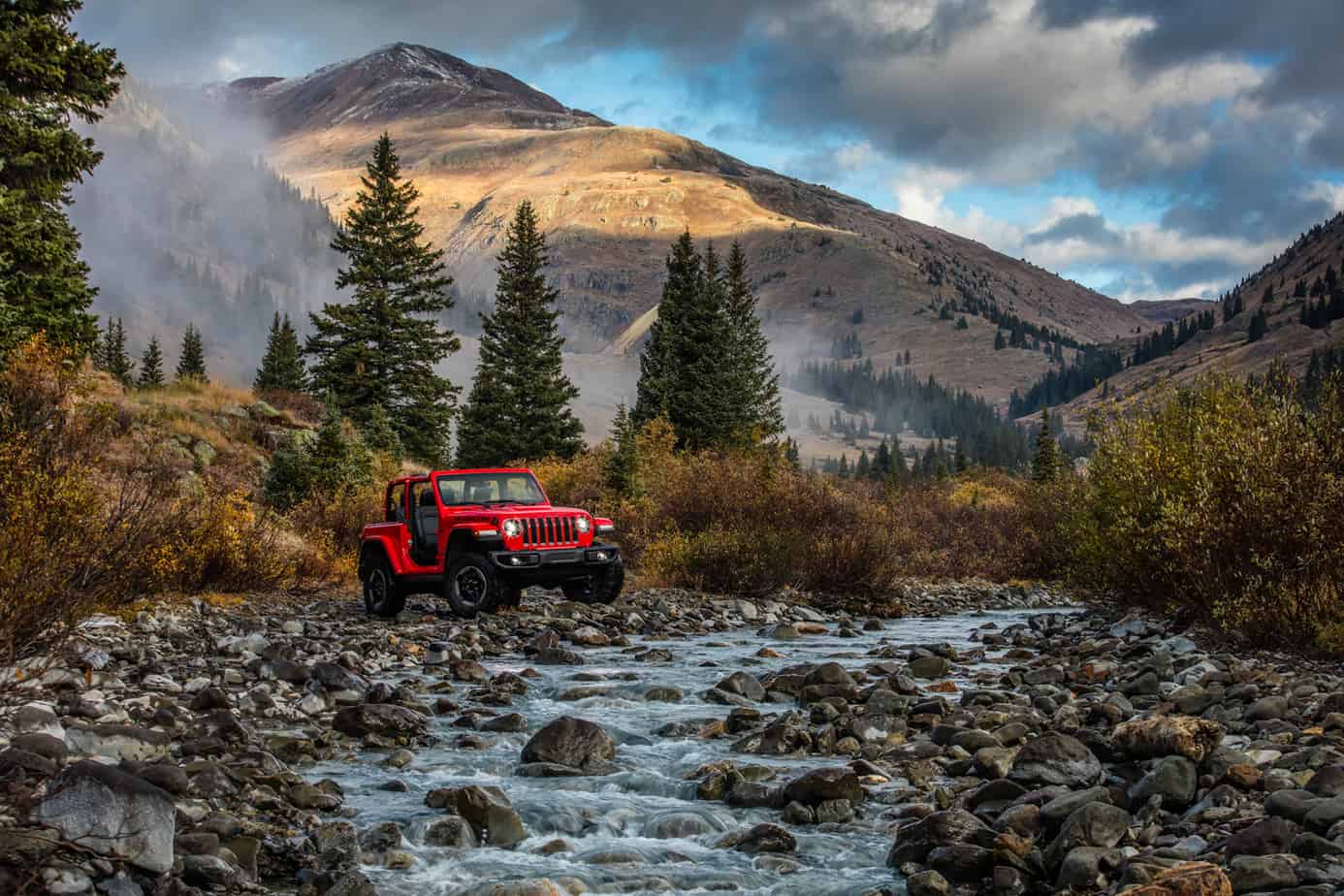
2. There will be three motor options, and yes, one is diesel.
That’s right folks, we will finally be getting a diesel motor in the Wrangler. “In response to overwhelming consumer demand,” they’ve added a 3.0-liter EcoDiesel V-6 with 260 horsepower and 442 pound-feet of torque. You can expect to see this option in 2019. Unfortunately, it will only be available with the new 8-speed automatic transmission, and not the 6-speed manual, but beggars can’t be choosers.
There’s also a second new motor, a 2.0-liter turbocharged inline four producing 270 horsepower and 295 pound-feet of torque. This high-tech option feature’s Jeep’s new eTorque system, which includes hybrid functions like auto stop/start, electric power assist, extended fuel shut-off, transmission shift management, intelligent battery charging and regenerative braking.
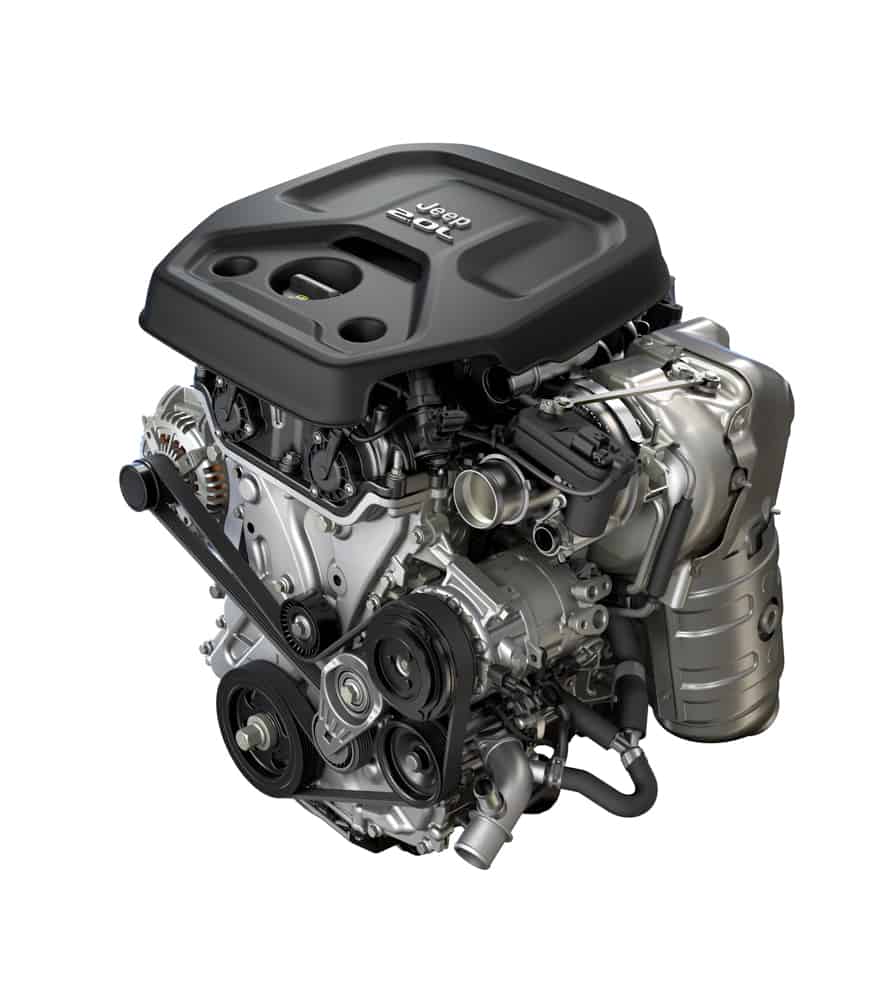
The Pentastar V-6 will return as the third option, producing 285 horsepower and 260 pound-feet of torque. It now features Engine Stop-Start (ESS) as standard, and is available with both the manual and automatic transmissions.

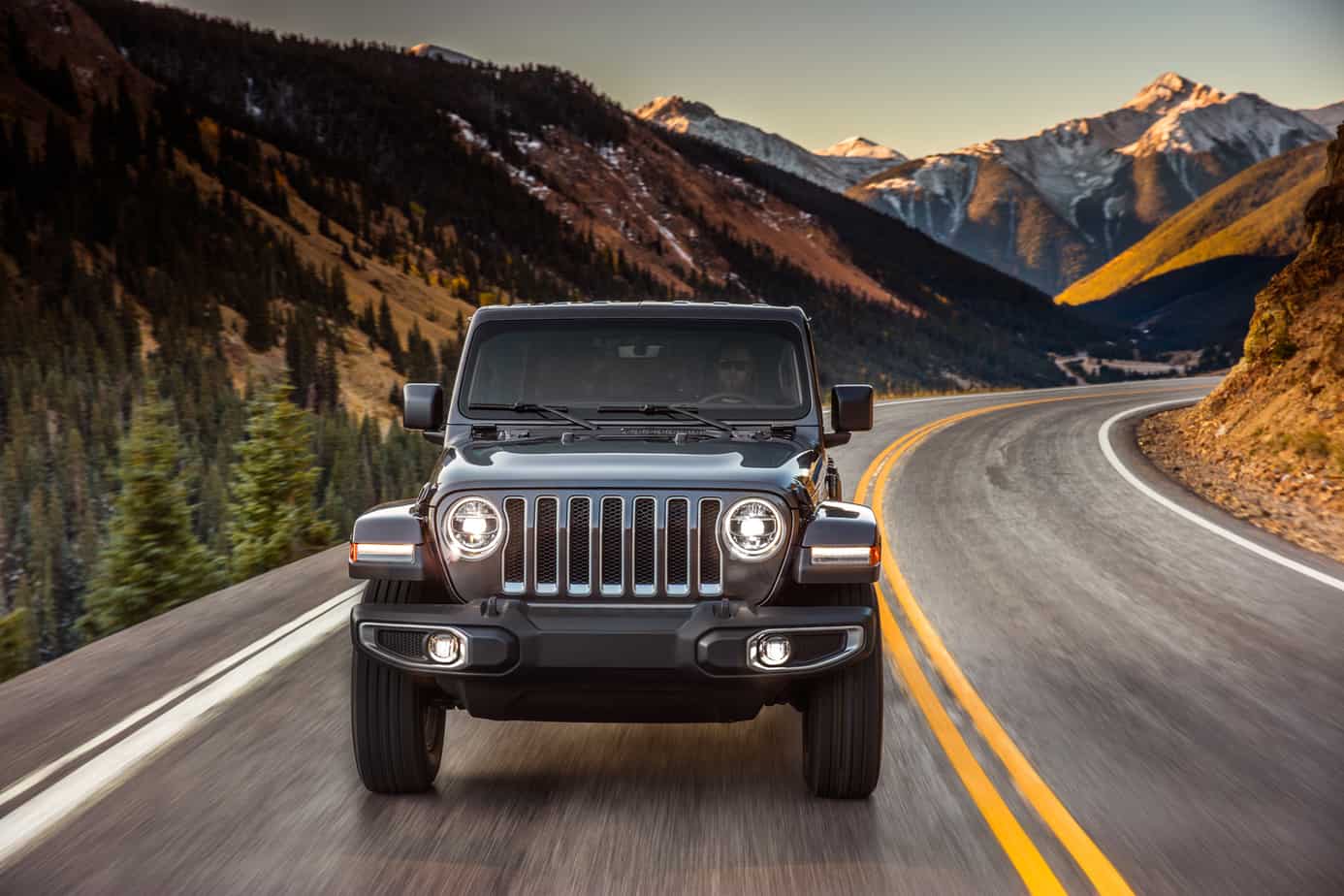

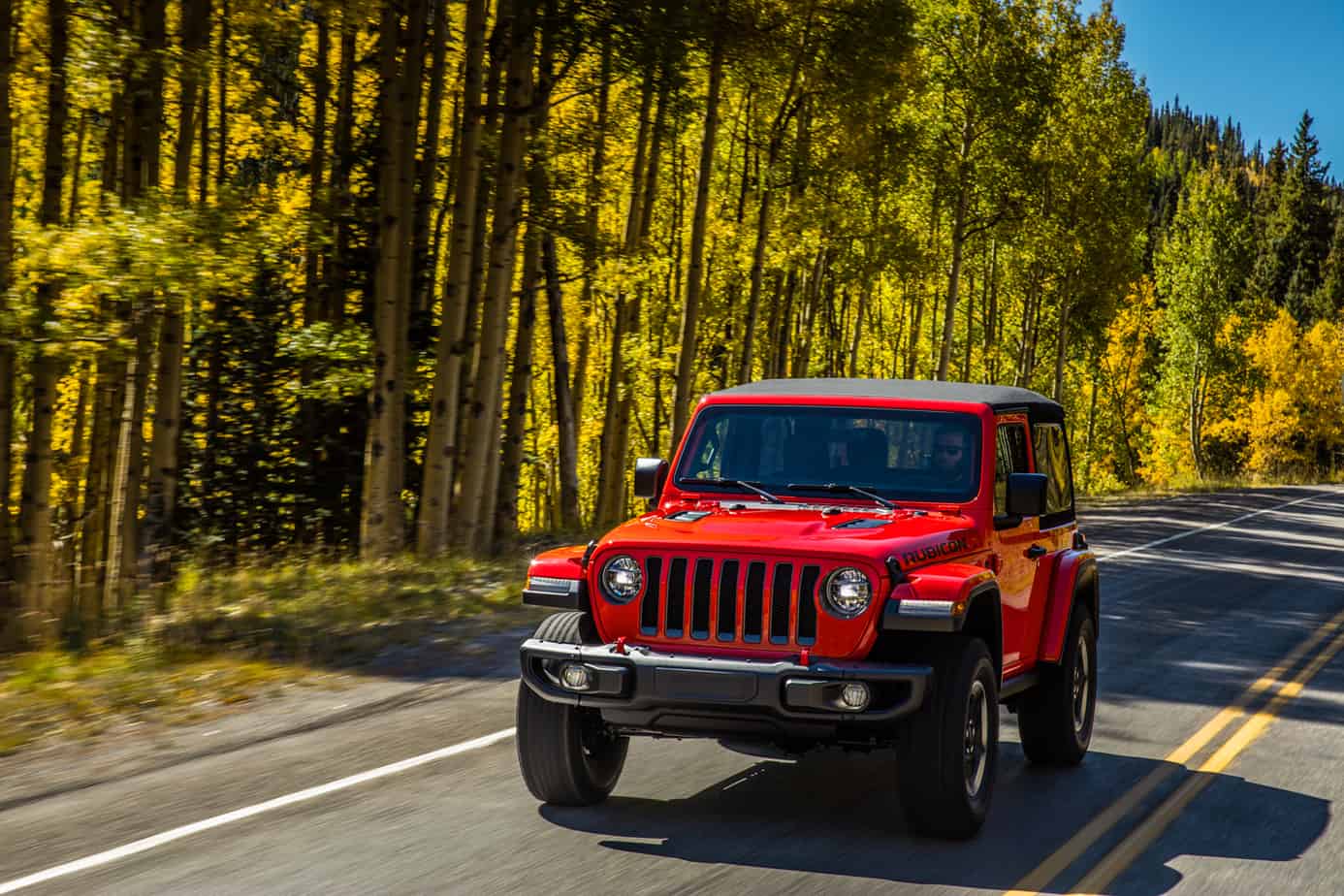
3. Approach, departure, breakover, and total ground clearance have improved.
Despite being larger than the JK, Jeep has managed to give the JL better clearance on the trail. The 2018 Wrangler boasts an approach angle of 44 degrees, breakover angle of 27.8 degrees (2 door)/22.6 degrees (4 door), departure angle of 37 degrees, and ground clearance of 10.9 inches. Compare that to the 2017 JK, which comes with a 42.2-degree approach angle, breakover of 25.8 degrees (2 door)/21.2 degrees (4 door), departure angle of 32.5 degrees, and ground clearance of 10 inches.



4. The windshield still folds down.
Let’s be honest, the JK’s “fold-down windshield” was so difficult to use it may as well have not been on there, but the ability to fold your front windshield forward was a classic feature of the Wrangler, and we’re happy to see it return on the JL. The redesigned system utilizes four easy to remove bolts to attach the windshield to the new A-pillar header bar. Once those have been taken off, drivers will simply need to pop off the windshield wipers and fold it forwards. The mirror will even stay in place thanks to a new mounting location on the header bar.



5. The JL is bigger than the JK.
Most of us had guessed that the JL would probably be bigger than the JK, and now that suspicion has been confirmed. Total width is just 1/10th of an inch greater on all models, but the four-door JL has grown by 3.5 inches in length from 184.9 inches to 188.4, and 2.4 inches in in wheelbase from 116 inches to 118.4. The two-door model has been lengthened as well, but only by 2.5 inches. It now measures in at 166.8 inches long as opposed to 164.3, and has a 1.4-inch longer wheelbase at 96.8 inches, compared to the JK’s 95.4. Despite the increase in size, weight has remained close to the same, as has the payload capacity, which ranges from 880 pounds to 1,000 pounds.

6. It still comes in manual.
While the manual transmission has been dying off at a rapid rate, Jeep has opted to keep it as standard equipment on most Wrangler models. Some variants, like those equipped with the diesel, will only come with the 8-speed automatic. The 2018 JL will feature an updated six-speed manual with new gear ratios for improved crawl performance, and a cable operated design to eliminate shifter vibration while improving sound isolation. Jeep claims that the “revised shift pattern features improved shift accuracy, a more comfortable shifting position, and 50-percent shorter shifter throws than that of the outgoing Wrangler model.”

What else is new?
If you’ve made it this far into the article, you’re probably wondering what other goodies the new JL will be boasting that the JK does not, and there are quite a few. Let’s start with the fun stuff: four-wheel drive components. The 2018 Wrangler will be available with an all-new winch-ready steel bumper designed to fit a Mopar edition WARN winch. This bumper also has removable end caps to improve clearance in tough off-road conditions. The standard tires on the Rubicons are now 33-inch BFGoodrich TA-KO2 All-terrains, and there’s an optional Selec-Trac two-speed transfer case with full-time four-wheel drive for Sahara packages. More than 200 new accessories will also be available for the JL, including for the first time a Mopar roof-rack with a variety of attachments for any type of adventure. There will also be off-road lights, auxiliary switch banks, a tailgate table, beadlock-ready wheels, and so much more.







While we’re thrilled to see that Jeep has stuck to the Wrangler’s heritage, they’ve also managed to modernize it with a beautiful new interior and several slick options. Take for example, the all-new Sky One-Touch powertop, an electronically controlled soft-top which allows the driver to retract the full-length roof at the touch of a button. Then there’s the 8.4-inch touchscreen, the most advanced and largest Uconnect display ever offered on a Wrangler. It can be used for navigation, music, climate control, and even to monitor various off-road and engine data. There’s also a push-to-start keyless entry system, a flatter and more attractive dash, soft-touch accents, and adjustable seat bolsters and lumbar support. Of course, it wouldn’t be a Wrangler if these features weren’t all weather resistant, and the engineers assure us they are.

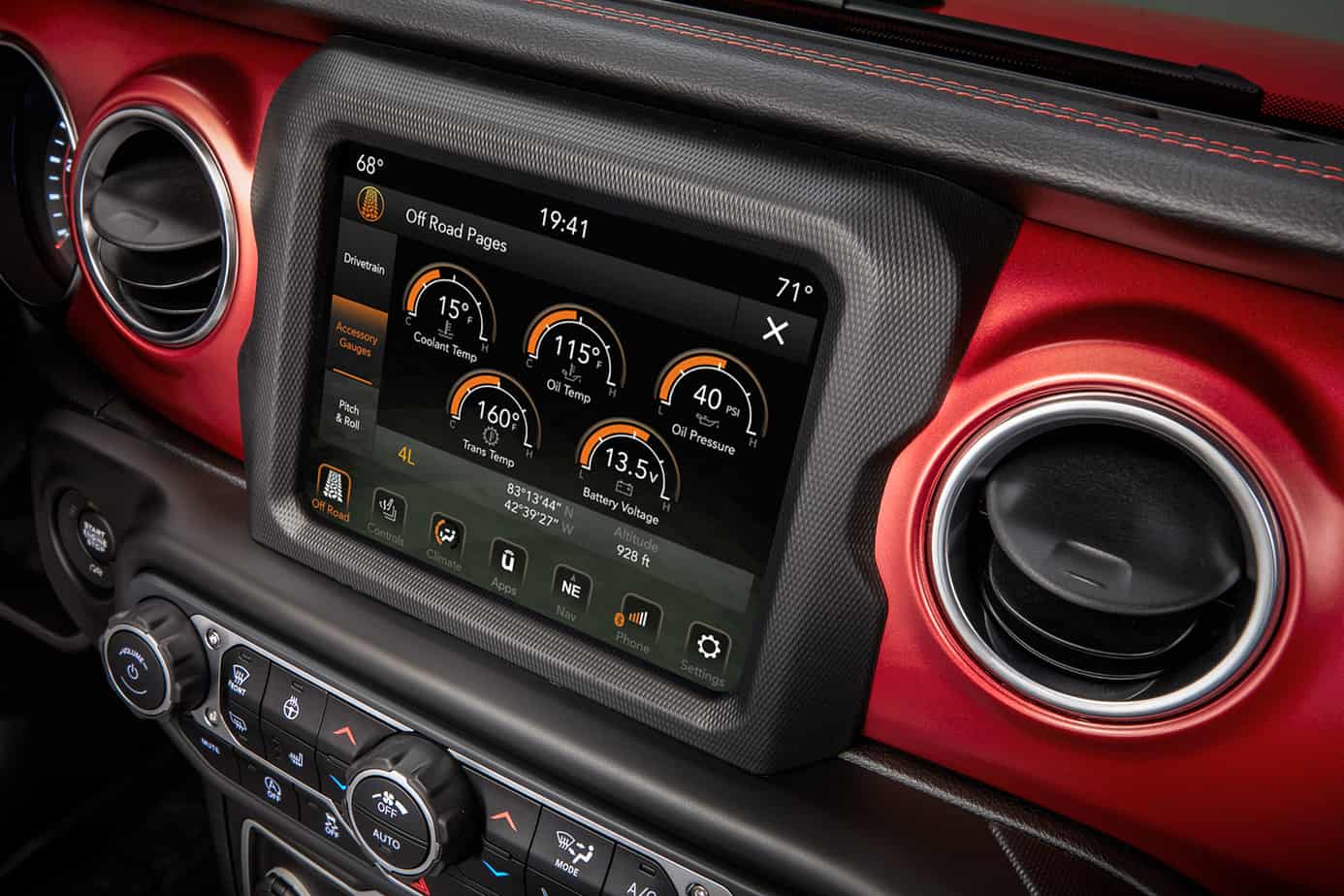





The doors are now lighter than the previous variants and made from high-strength aluminum to reduce weight. Jeep also made it easier to remove them by installing lift-assist handles and stamping the Torx bit tool size onto the hinge to eliminate guessing what tool is needed.
Finally, the Sahara and Rubicon packages are now available with LED headlamps and fog lamps. The headlamps serve as daytime running lights by using a halo pattern around the outside of the light, and LED turn signals are positioned on the front of the wheel flares.


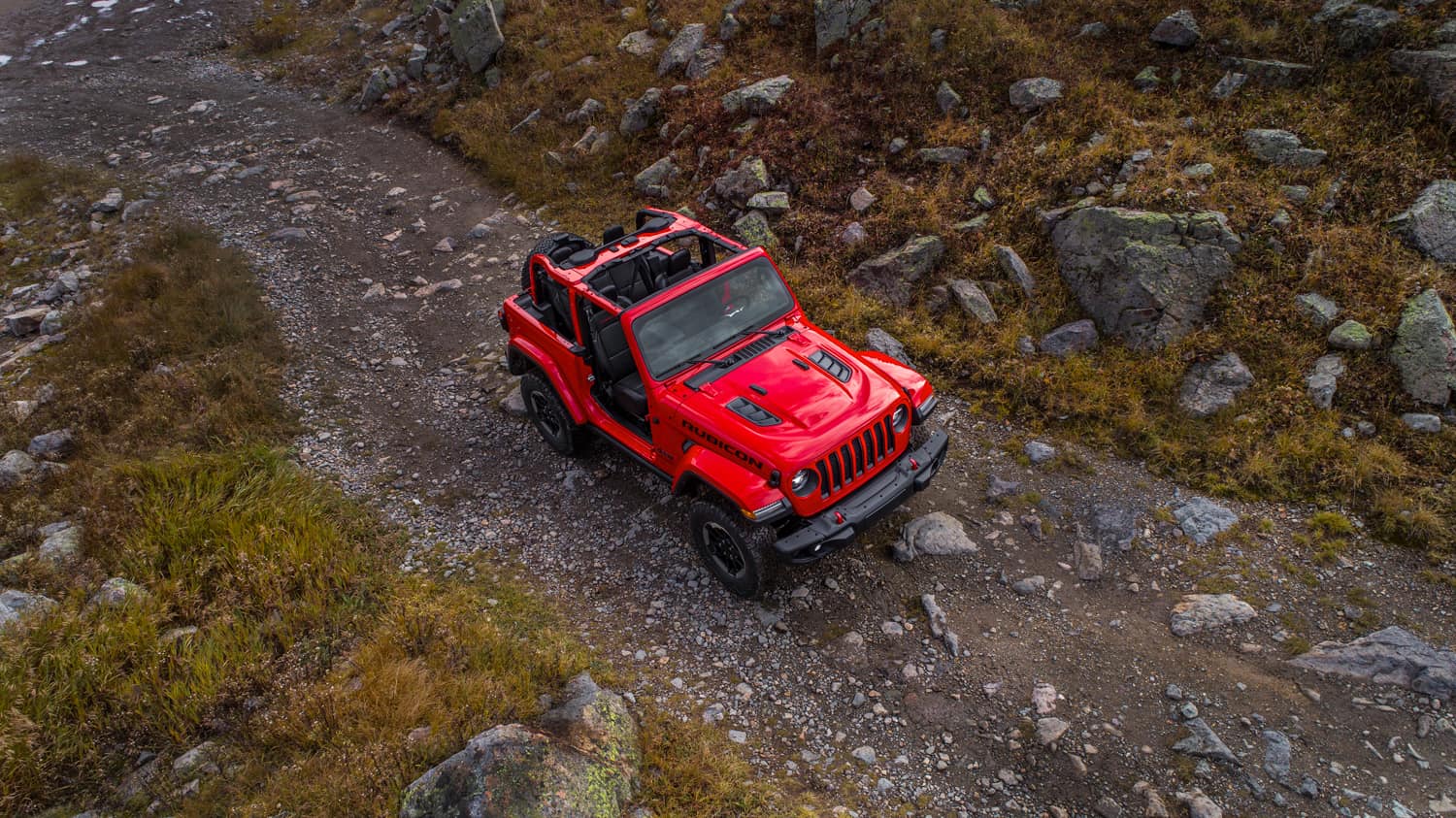
The Off-Road Test
The JL is packed with so many new parts and design aspects that we could probably expound on about them for ages, but truthfully, that sounds sort of boring. Instead, we will be putting the new JL Wrangler through its paces off-road, and reporting back here by the middle of December. Check back to see all the action, and find out if this Jeep lives up to the Wrangler name!
To read all about the details of this Wrangler, take a look at Jeep’s press release here.



